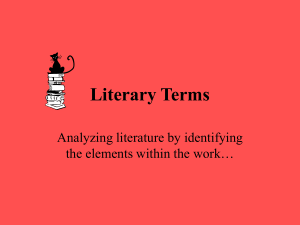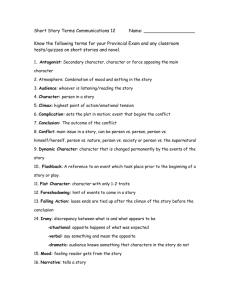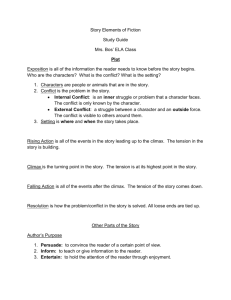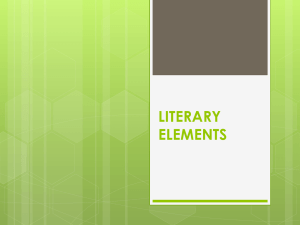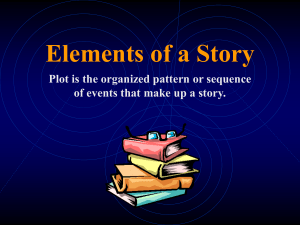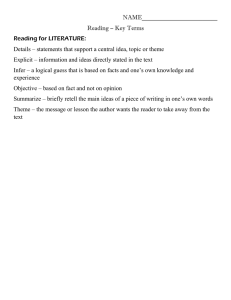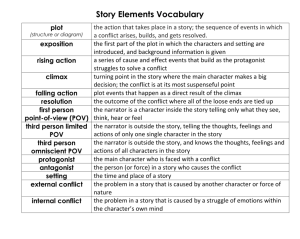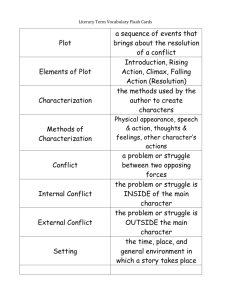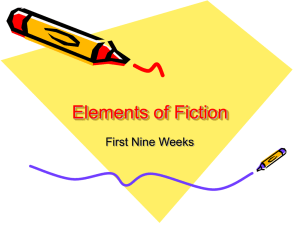Short Story Terms Quiz
advertisement
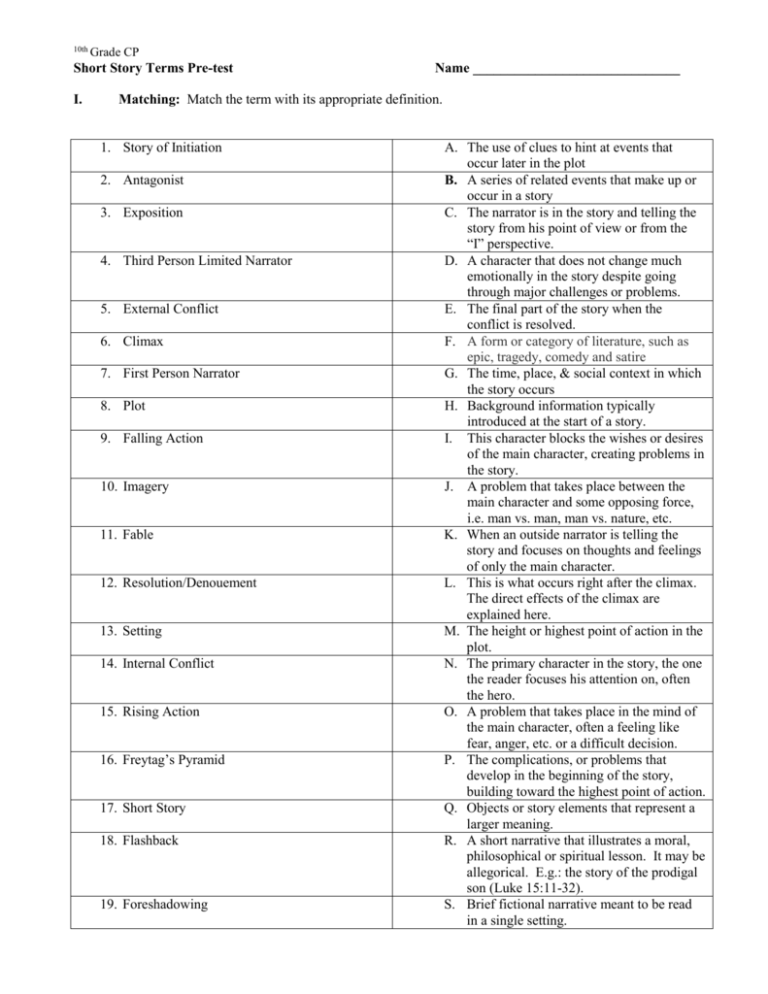
10th Grade CP Short Story Terms Pre-test I. Name ______________________________ Matching: Match the term with its appropriate definition. 1. Story of Initiation 2. Antagonist 3. Exposition 4. Third Person Limited Narrator 5. External Conflict 6. Climax 7. First Person Narrator 8. Plot 9. Falling Action 10. Imagery 11. Fable 12. Resolution/Denouement 13. Setting 14. Internal Conflict 15. Rising Action 16. Freytag’s Pyramid 17. Short Story 18. Flashback 19. Foreshadowing A. The use of clues to hint at events that occur later in the plot B. A series of related events that make up or occur in a story C. The narrator is in the story and telling the story from his point of view or from the “I” perspective. D. A character that does not change much emotionally in the story despite going through major challenges or problems. E. The final part of the story when the conflict is resolved. F. A form or category of literature, such as epic, tragedy, comedy and satire G. The time, place, & social context in which the story occurs H. Background information typically introduced at the start of a story. I. This character blocks the wishes or desires of the main character, creating problems in the story. J. A problem that takes place between the main character and some opposing force, i.e. man vs. man, man vs. nature, etc. K. When an outside narrator is telling the story and focuses on thoughts and feelings of only the main character. L. This is what occurs right after the climax. The direct effects of the climax are explained here. M. The height or highest point of action in the plot. N. The primary character in the story, the one the reader focuses his attention on, often the hero. O. A problem that takes place in the mind of the main character, often a feeling like fear, anger, etc. or a difficult decision. P. The complications, or problems that develop in the beginning of the story, building toward the highest point of action. Q. Objects or story elements that represent a larger meaning. R. A short narrative that illustrates a moral, philosophical or spiritual lesson. It may be allegorical. E.g.: the story of the prodigal son (Luke 15:11-32). S. Brief fictional narrative meant to be read in a single setting. 10th Grade CP 20. 21. 22. 23. Mood Character Traits Theme Symbolism 24. Indirect Characterization 25. Parable 26. Genre 27. Dynamic Character 28. Protagonist 29. Static Character 30. Hyperbole 31. Satire 32. Personification T. U. V. W. Diagram used to show plot structure. Shifts to the past. Qualities a character possesses. A short story, typically with animals as characters, conveying a moral. X. A purposeful exaggeration for emphasis or humor. Y. Reader learns about a character through what they say and do and how other characters respond to them. Z. A short story depicting a decisive incident that initiates a character into a higher state of awareness, whether for better or for worse. AA. Words or phrases that appeal to the reader’s senses. BB. Human qualities attributed to an animal, object, or idea, e.g. “The wind exhaled.” CC. Writing that comments humorously on human flaws, ideas, social customs, or institutions in order to change them DD. A main idea or an underlying meaning of a literary work that may be stated directly or indirectly. EE. It can also be referred to as atmosphere because it creates an emotional setting enveloping the reader. FF. A character that undergoes emotional change, or development after experiencing the conflict and its resolution 33. Please list the five kinds of conflict and give an example of each 34. What are the three types of irony?
